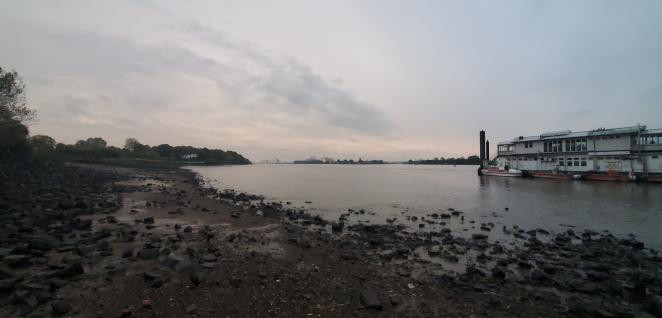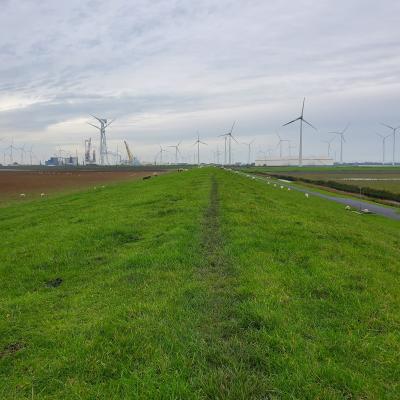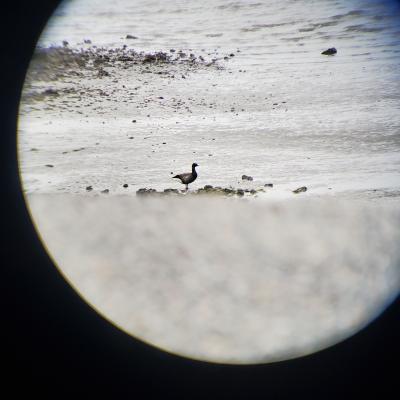
Yoann Roulet, Université de Bretagne Occidentale
Embarking on a journey along the North Sea coast, Yoann Roulet takes us through the process of developing biodiversity measurement protocols within the DARKER SKY project.
Yoann, an ecologist specialising in bats from the Université de Bretagne Occidentale in Brest, France, plays a crucial role in the DARKER SKY project. His mission involves utilising his expertise in bats and monitoring to coordinate the development of common biodiversity assessment protocols across the project's demonstrator sites to investigate whether the light modifications installed at the demo sites impact the local and migratory species (diurnal and nocturnal, terrestrial and marine). In his mission he is supported by all project partners, in particular by environmental experts from his university, VHL - Van Hall Larenstein University of Applied Science(Leeuwarden, Netherlands) and Institute of Avian Research (Wilhelmshaven, Germany).
In such a transnational project the establishment of standardised biodiversity assessments is quite a challenge due to differing actors, public regulations, and funding models across partner organisations and countries. The diversity of EU, country or local regulations, budgeting policies, and working approaches requires finding common ground to apply effective solutions while acknowledging the unique context of each site. For this reason Yoann embarked on a journey along the North Sea coast, spanning Norddeich, Hamburg, Lauwersoog and Holwerd. He wanted to make use of this unique opportunity to assess site conditions, discuss implementation possibilities, and engage in effective, in-person discussions with project partners to clarify feasibility and address concerns.
In October 2023 Yoann started his journey in Brest. His first stop was Norddeich in Germany, followed by Hamburg, then Lauwersoog, Holwerd and Leeuwarden in the Netherlands. At each location he was welcomed by the project partners. Together the demonstrator sites were visited and assessed for their suitability to study the chosen focal species (breeding and migrating birds, bats, flying arthropods and rocky shore fauna). The selection of species and respective monitoring methods was a thoughtful process, driven by their suitability as common bioindicators to indicate environmental conditions. Each location was investigated for habitat types and sites were chosen where the monitoring could best take place. Species that are in particular ecological interest for the local stakeholders were discussed, like some breeding bird populations in the salt marsh in Norddeich and the black-tailed godwit in Holwerd. In Leeuwarden expert Arjen Strijkstra from VHL gave insight into his lab and the complex analysis of arthropod data was discussed.
During the visits, Yoann and the partners aim was to further develop the protocols involving a standardised approach across varied marine and terrestrial environments. The comprehensive protocols include testing, modifying, and assessing long-term impacts, with a specific emphasis on including the increase of biodiversity and reduction of light pollution in harbour management. With each visit the protocols took shape more and more by deciding on procedures, time frames, focal species, materials, and monitoring and analysis methodologies.
Eventually migrating and breeding birds, bats, flying arthropods, and rocky shore species were confirmed as focal species for their ecological, regulatory and cultural significance.
Each monitoring method was tailored to capture specific data on behaviour and diversity of focal species
Acoustic and singing activity of bats, migrating and breeding birds will be monitored with respective acoustic techniques to assess how activity of groups of species might vary in respect to artificial lighting and time, and will be compared between study sites.
For flying arthropods a sticky trap methodology was adopted. Data will give information on abundance and diversity of flying arthropods at the local habitats.
Rocky shore fauna will be monitored with quadrat surveys to investigate how diversity, size, and structure of communities might vary with respect to artificial lighting and altitude, and will compare this between study sites

As the coordinator of Work Package 1.6, Yoann's journey significantly contributed to the protocol development process. The transnational collaboration was strengthened through direct, face-to-face interactions, fostering a deeper understanding of partners' work, resources, challenges, and solutions. The finalisation of the protocols is marking a crucial milestone in the collective effort to develop comprehensive biodiversity measurement protocols across diverse demo sites. Yoann's journey has not only contributed to the technical aspects of protocol development but has also strengthened the collaborative spirit essential for the project's success.
Photos: Yoann Roulet
Along his journey Yoann took time for some bird watching and to assess the coastal habitats of Eemshaven by day. There he caught first sight of some of the focal species!



